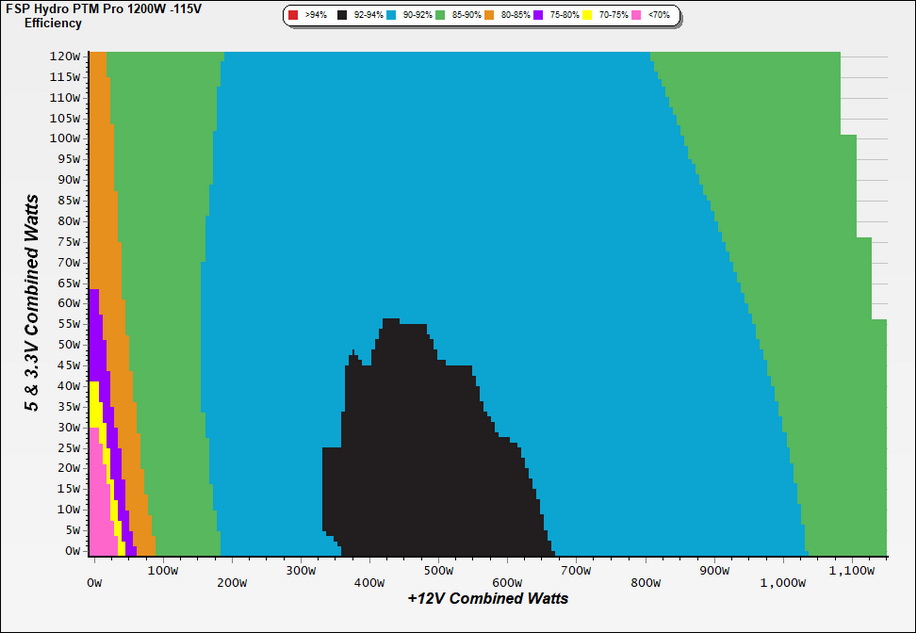Why you can trust Tom's Hardware
Protection Features
Check out our PSUs 101 article to learn more about PSU protection features.
|
Protection Features | |
| OCP (Cold @ 22°C) | 12V: 102.4A (102.4%), 11.985V 5V: 33.9A (169.5%), 4.985V 3.3V: 29.1A (145.5%), 3.327V 5VSB: 4.2A (140%), 4.986V |
| OCP (Hot @ 40°C) | 12V: -5V: 33A (165%), 4.994V 3.3V: 27.5A (137.5%), 3.329V 5VSB: 4.2A (140%), 4.987V |
| OPP (Cold @ 27°C) | 1319.91W (109.99%) |
| OPP (Hot @ 44°C) | 1319.88W (109.99%) |
| OTP | ✓ (100°C @ secondary side) |
| SCP | 12V to Earth: ✓5V to Earth: ✓3.3V to Earth: ✓5VSB to Earth: ✓-12V to Earth: ✓ |
| PWR_OK | Proper Operation |
| NLO | ✓ |
| SIP | Surge: MOV Inrush: NTC Thermistor & Bypass Relay |
With high operating temperatures, we could not load the 12V rail higher than its nominal capacity, while at low temperatures, OCP on the same rail is set low. We are not sure why FSP left so little room for overloading on this rail, but this doesn't look right.
Normally, OCP at 12V should be higher than 110%. On the contrary, OCP is set high on the minor rails, especially at 5V. There is no need for such high power levels at 5V and 3.3V. The only thing you achieve with this is increasing the possibility of something bad happening to the PSU. Finally, OTP is set pretty low, but this didn't create any issues during our tough test sessions.
DC Power Sequencing
According to Intel’s most recent Power Supply Design Guide (revision 1.4), the +12V and 5V outputs must be equal to or greater than the 3.3V rail at all times. Unfortunately, Intel doesn't mention why it is so important to always keep the 3.3V rail's voltage lower than the levels of the other two outputs.
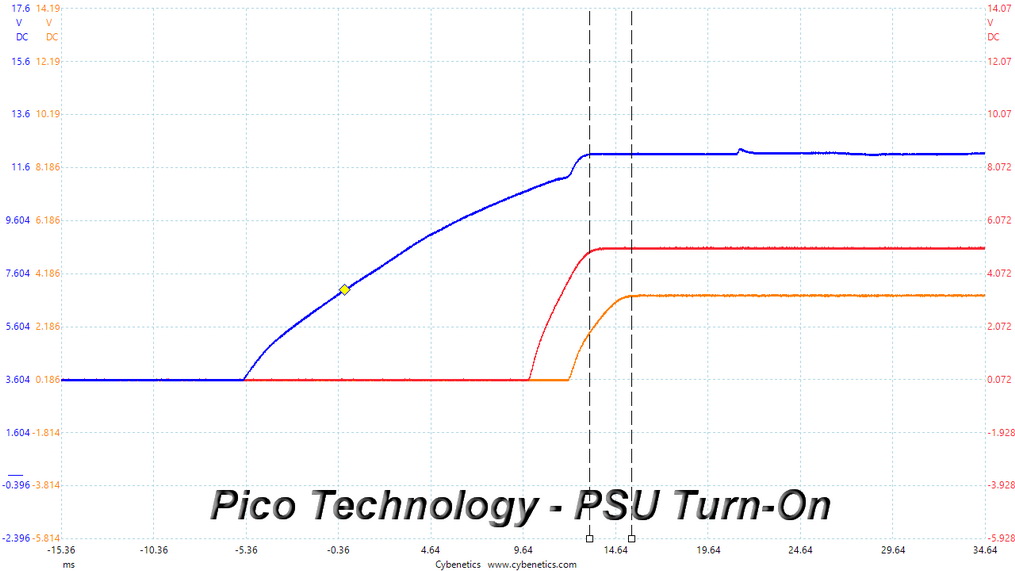
DC Power Sequencing Scope Shots

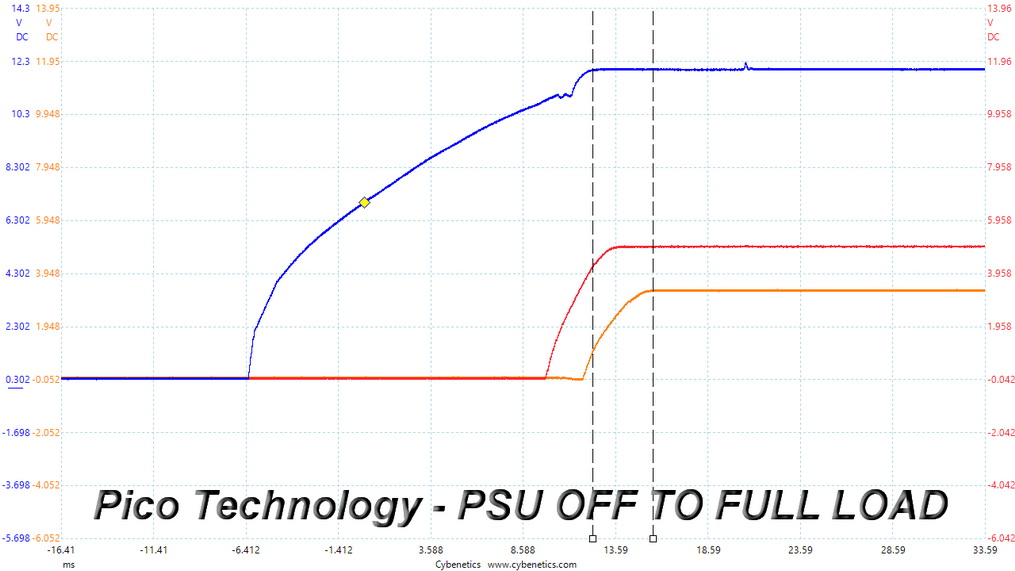
The 3.3V rail is kept at a lower voltage level than the other two, in all cases.
Cross Load Tests
To generate the following charts, we set our loaders to auto mode through custom-made software before trying more than 25,000 possible load combinations with the +12V, 5V, and 3.3V rails.
The deviations in each of the charts below are calculated by taking the nominal values of the rails (12V, 5V, and 3.3V) as point zero. The ambient temperature during testing was between 30 to 32 degrees Celsius (86 to 89.6 degrees Fahrenheit).
Get Tom's Hardware's best news and in-depth reviews, straight to your inbox.
Load Regulation Charts
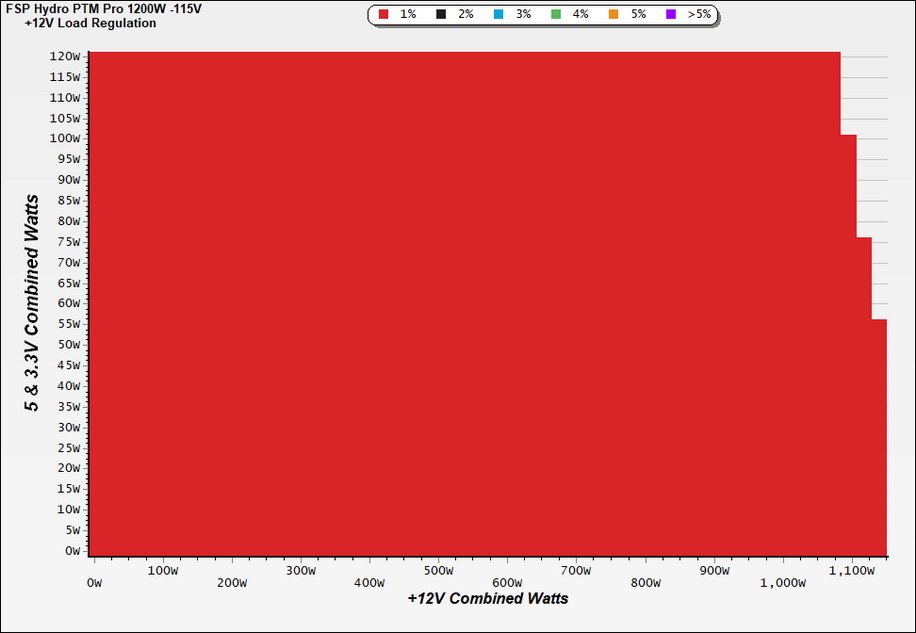
Load Regulation Charts
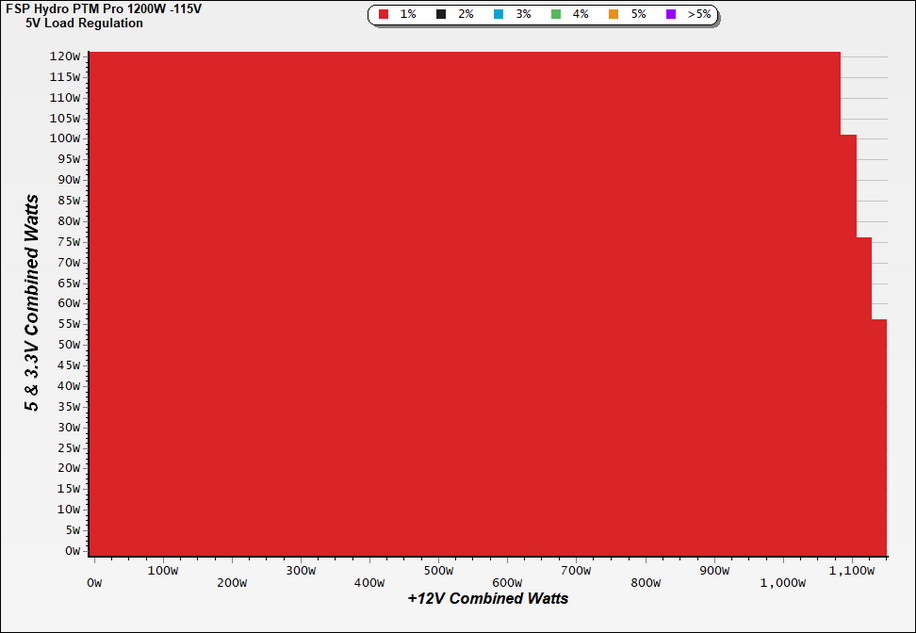

Efficiency Chart
Ripple Charts
The lower the power supply's ripple, the more stable the system will be, and less stress will also be applied to its components.
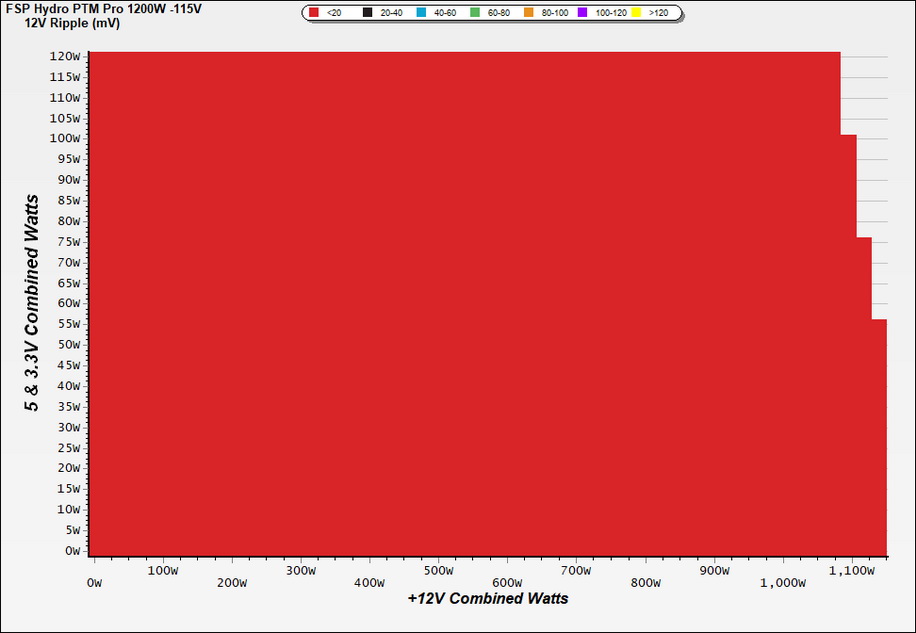
Ripple Suppression Charts
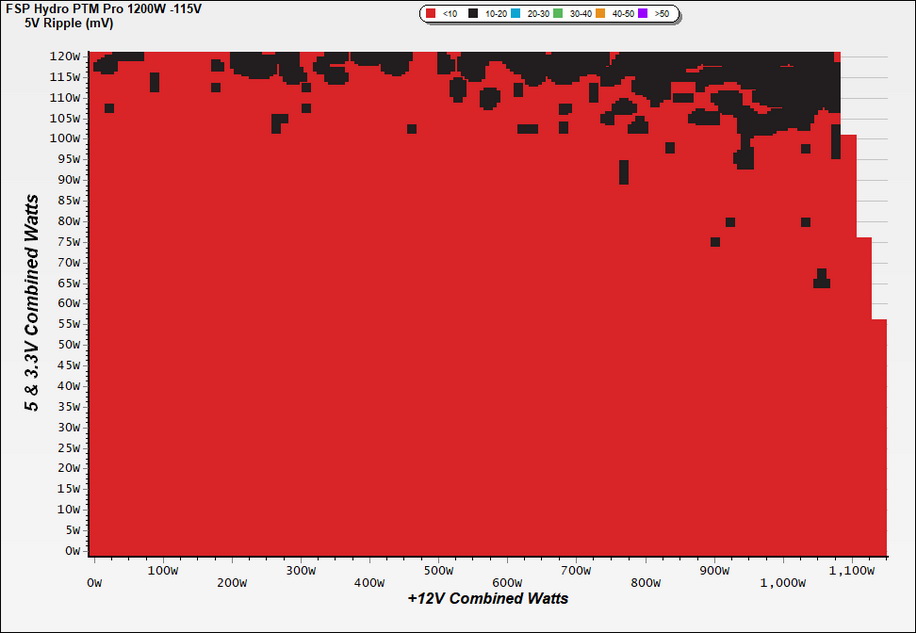


Infrared Images
We apply a half-load for 10 minutes with the PSU's top cover and cooling fan removed before taking photos with a modified FLIR E4 camera able to deliver an IR resolution of 320x240 (76,800 pixels).
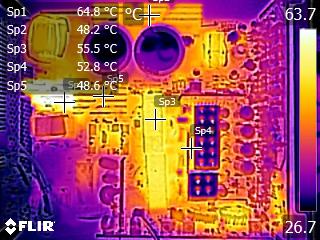
IR Images


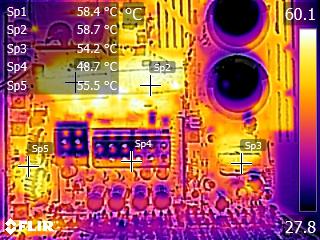
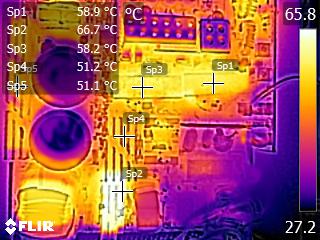
The hottest parts are the bridge rectifiers, which are installed on a small heat sink. Still, their operating temperature is kept much lower than the maximum allowed, and given that they are overrated, you won't have any problems as long as the fan operates normally.
MORE: Best Power Supplies
MORE: How We Test Power Supplies
MORE: All Power Supply Content
Current page: Protection Features, DC Power Sequencing, Cross-Load Tests and Infrared Images
Prev Page Load Regulation, Hold-Up Time, Inrush & Leakage Current, Efficiency and Noise Next Page Transient Response Tests, Timing Tests, Ripple Measurements and EMC Pre-Compliance Testing
Aris Mpitziopoulos is a contributing editor at Tom's Hardware, covering PSUs.
-
Co BIY I would be interested in the reviewer's opinion of the conformal coating and anything he saw related to humidity-proof claims.Reply
Was it visible in the tear down ? is it actually different than other products ? -
Jeremy.L Reply
The conformal coating is hardly to find unless you use some devices to scratch the surface of the PCB board. Its overall performance is beyond my expectation.Co BIY said:I would be interested in the reviewer's opinion of the conformal coating and anything he saw related to humidity-proof claims.
Was it visible in the tear down ? is it actually different than other products ?
